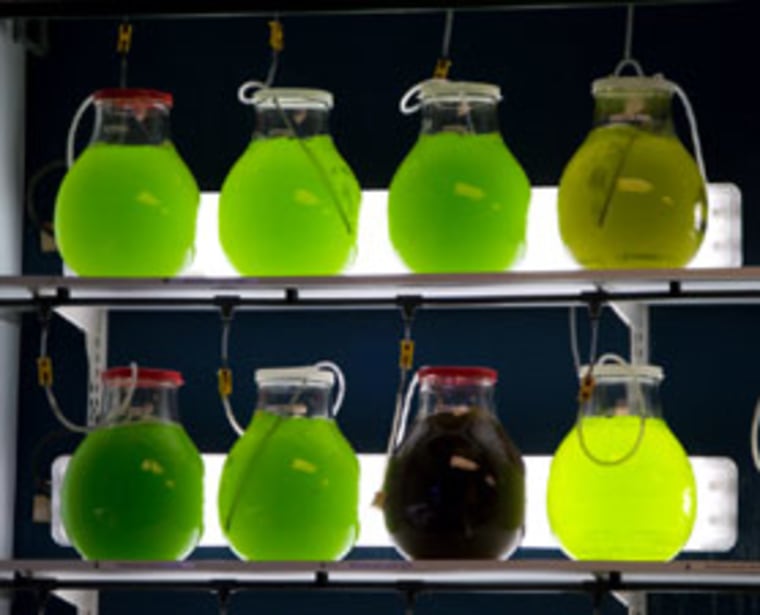Although algae is currently the most energy-dense biofuel source, the cost of producing algae oil is prohibitively expensive.
The U.S. Department of Energy estimates that the biofuel would cost around $8 per gallon at the pump. Other experts have even projected prices of more than $50 per gallon because of inefficient production and harvesting methods.
However, a team of engineers plans to investigate whether algae commercially grown in the ocean on specialized platforms could reduce the high costs of biofuel production, potentially bringing our energy economy one step closer to shifting from fossil fuels to renewable resources.
Kansas State University engineer Wenquiao Yuan and his colleague think that growing algae on floating, acre-sized platforms in the ocean could dramatically reduce expenses associated with algae oil production by providing free sources of sunlight, nutrients, controlled temperature and water.
"I think the major reason (to grow algae in the ocean) is cost," said Yuan. "Right now, on land, in ponds or photobioreactors, algae-based biofuel is just too costly."
To start, the engineers must find an oil-rich algae strain and the right type of surface material and texture to promote maximum growth.
"Algae naturally attach to some substrates; however, for cost-effective production, that's not enough," Yuan told Discovery News.
Unless the platform can grow algae several millimeters thick, it would be too difficult to scrape off the biomass for processing into oil.
So far, the algae have responded well to dimpled stainless-steel. But the engineers still don't know why algae grow differently, depending on the type of material and surface texture.
Understanding those "mechanisms of attachment" is the goal of the first portion of the research, which is funded by the National Academy of Sciences (NAS). From there, the engineers will likely test their platform system in a smaller pond environment and then take it offshore.
However, the ocean environment could present some unavoidable problems.
"As far as growing algae in the ocean — if they're in a containment system -- the biggest problem is going to be weather," said Richard Sayre, a leading expert on algae biofuels and the director of the Donald Danforth Plant Science Center in St. Louis.
"If you have a storm, how are you going to prevent that system from being destroyed, essentially?" Sayre asked. "There's virtually no place in the world that's free of storms."
Yuan said that storm-proofing the system is a problem he has yet to tackle. But considering that the algae biofuel industry is still 10 to 15 years away from offering high volumes of affordable biofuel, the Kansas State engineers should have ample time to work out the kinks.
"Given the state of where we are right now with very small pilot plants and demonstration facilities, the biggest hurdle we'll have to get over is: Will a large-scale demonstration plant be able to hit its target of the $2 to $4 gallon of oil?" Sayre said. "If we can achieve that, I think it'll take off in a very real way."
